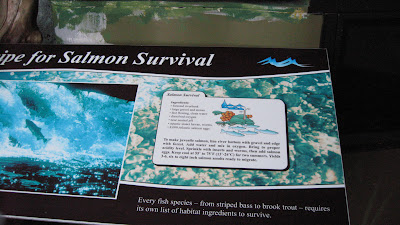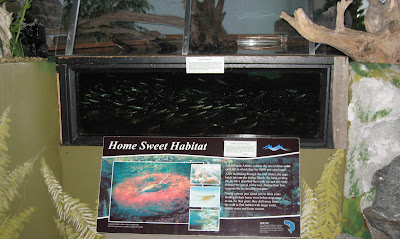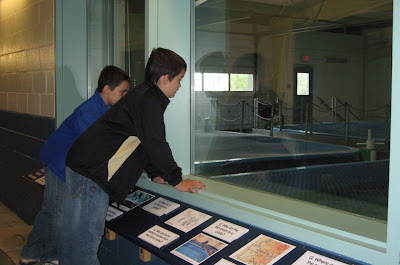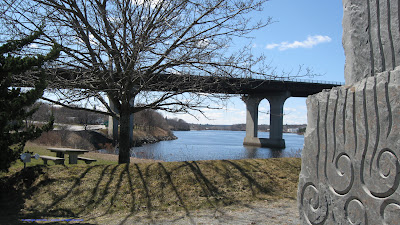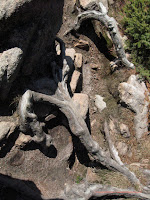
Sometimes referred to as North
America’s castles, our lighthouses in the United States have, over the years,
provided us with more than signals warning of impending danger along our
coastlines. Each lighthouse serves as a little beacon of history and projects insights from the experiences of past “keepers”
and their families we can learn from today. Much of our coastal history could have long been forgotten
if it had not been recorded in a lighthouse keeper’s log.
 In Maine alone, more than sixty unique beacons of history dot the rocky Atlantic coastline, both on and off
shore. Wherever you happen to be along the Maine coast, there will be a
lighthouse somewhere nearby. If you want to take a closer look at one, inside
and out, mark September 15th on your calendar. More than
15,000 people visited Maine’s twenty-four open light stations during their 2011 open lighthouse event,
which proved to be the largest effort of its kind in the nation with 4,100
people climbing up into the towers to experience first hand a lighthouse
keeper’s view. I’m very happy to say, in spite of my fear of heights, I was one of them.
In Maine alone, more than sixty unique beacons of history dot the rocky Atlantic coastline, both on and off
shore. Wherever you happen to be along the Maine coast, there will be a
lighthouse somewhere nearby. If you want to take a closer look at one, inside
and out, mark September 15th on your calendar. More than
15,000 people visited Maine’s twenty-four open light stations during their 2011 open lighthouse event,
which proved to be the largest effort of its kind in the nation with 4,100
people climbing up into the towers to experience first hand a lighthouse
keeper’s view. I’m very happy to say, in spite of my fear of heights, I was one of them. My light of choice last year
was Owl's Head, land based and southeast of Rockland (and pictured in this post). I’ve always enjoyed the pleasant
walk in to the light and I adore the legends surrounding this station, especially
tales of “Spot the Lighthouse Dog” whose final resting place is on the
lighthouse grounds near the fog bell which brought him fame. And, I can’t help
but love its legendary, and probably, downright, fibs. They, too, are charming in their
own way and may contain a speck or two of truth. The biggest of such "fibs" I’ve heard is the tale of
lighthouse keeper William Masters and his heroic rescue of Richard Ingraham
and Lydia Dyerin in December of 1850. Both Ingraham and Dyerin were reportedly frozen alive
into blocks of ice on the deck of their vessel during in a winter storm.
Masters supposedly took them ashore and thawed them back to life in his
kitchen. (If you believe that, I have a lighthouse for sale in Baxter State
Park you can make an offer on.)
My light of choice last year
was Owl's Head, land based and southeast of Rockland (and pictured in this post). I’ve always enjoyed the pleasant
walk in to the light and I adore the legends surrounding this station, especially
tales of “Spot the Lighthouse Dog” whose final resting place is on the
lighthouse grounds near the fog bell which brought him fame. And, I can’t help
but love its legendary, and probably, downright, fibs. They, too, are charming in their
own way and may contain a speck or two of truth. The biggest of such "fibs" I’ve heard is the tale of
lighthouse keeper William Masters and his heroic rescue of Richard Ingraham
and Lydia Dyerin in December of 1850. Both Ingraham and Dyerin were reportedly frozen alive
into blocks of ice on the deck of their vessel during in a winter storm.
Masters supposedly took them ashore and thawed them back to life in his
kitchen. (If you believe that, I have a lighthouse for sale in Baxter State
Park you can make an offer on.)
 The Owl’s Head light tower, itself,
is an easy climb as it is only 30 feet tall. However, it stands on top of a
rock formation nearly 70 feet in height that provides a 100-foot
focal plane for the tower’s Fresnel lens. You’ll find interesting historic facts and trivia
on display in a kiosk, thanks to former lighthouse keeper, David Bennett, who
generously constructed it for the entrance to the grounds. You’ll also be pleased with the
beautiful picnic area and ample parking.
The Owl’s Head light tower, itself,
is an easy climb as it is only 30 feet tall. However, it stands on top of a
rock formation nearly 70 feet in height that provides a 100-foot
focal plane for the tower’s Fresnel lens. You’ll find interesting historic facts and trivia
on display in a kiosk, thanks to former lighthouse keeper, David Bennett, who
generously constructed it for the entrance to the grounds. You’ll also be pleased with the
beautiful picnic area and ample parking.
Many other Maine mid-coast light stations will be
participating in the Open Lighthouse event and I myself, plan to take in
several for a full day of lighthouse activity.
For more detailed information, maps, and tour
guides for Maine’s Lighthouses and
Open Lighthouse Day visit these links:
The U.S. Coast Guard, the State of Maine and the American Lighthouse Foundation will present the fourth annual Maine Open Lighthouse Day, September 15, 2012, rain or shine. Most of the lighthouses participating will be open 9 a.m. to 3 p.m.
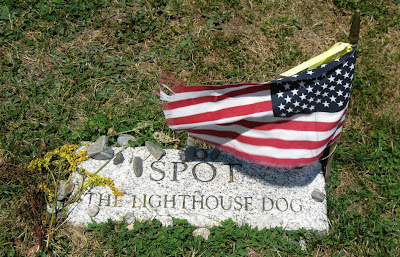 |
| Blae hopes you'll pay your respects to Spot while visiting Owl's Head Light. |
 |
| One story on display in the kiosk is how Owl's Head got its name. |
Gail J. VanWart is a regular
contributor to
theSCENE, a publication of Courier Publications LLC in Rockland,
Maine https://www.facebook.com/theSCENE1
© Copyright 2012 Gail J. VanWart All Rights Reserved








